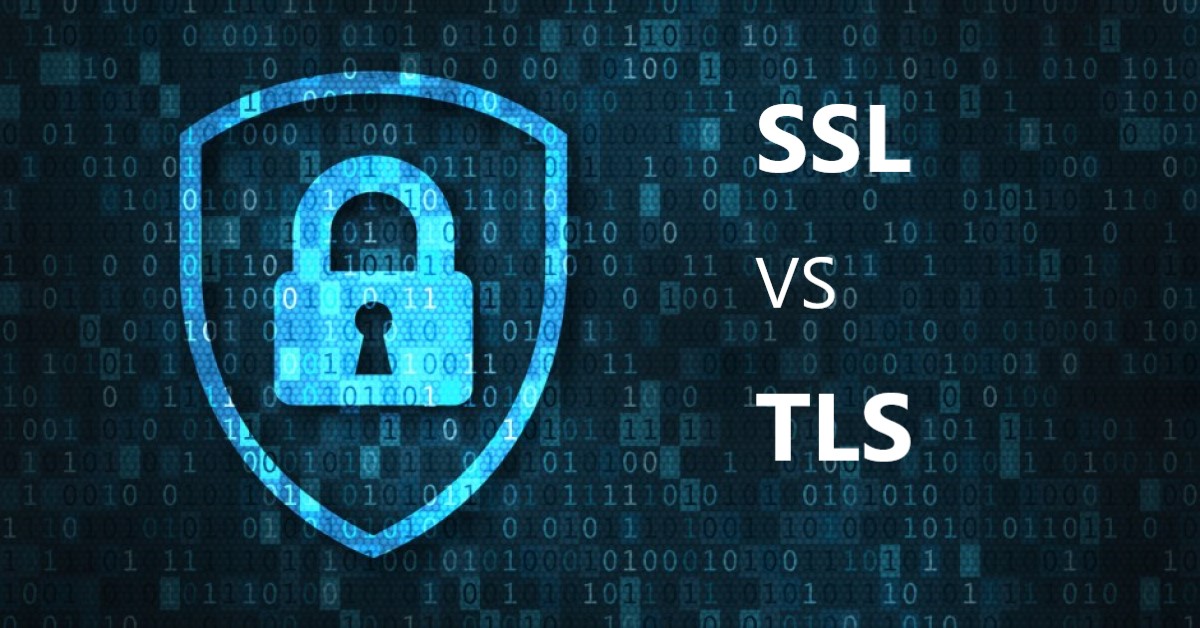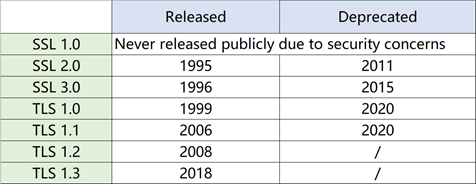SSL Certificate
Deploy an SSL certificate to enable HTTPS encryption of websites, trusted identity authentication and prevent against data leaks or tampering during transmission.
Get SSL Certificate >Blog > SSL vs. TLS: What Are the Differences?
Tag:
SSL
TLS
4716:0
CatherineSeptember 20 2023

Unless you are tech-savvy or have read about it, you may not know the difference between SSL and TLS. Both are developed to protect your privacy and data security on the Internet. Then you may wonder, since they are all about ensuring online security, why do people use two different names to express essentially the same thing? Will I get into trouble if I choose one over the other?
In this article, we will walk you through their definitions, their key differences, and the security level they bring.
SSL, the predecessor of TLS, was developed by Netscape. After the protocol maintenance was handed over to the IETF, it was renamed TLS. SSL 1.0 was only used internally and was never publicly released due to its security vulnerability and unreliability. Subsequently, the SSL 2.0 version was released in February 1995, but again, this version had many security flaws, so it was deprecated in 2011. The SSL 3.0 version was released in 1996, one year after SSL 2.0 was released, and was also deprecated in 2015. TLS was developed based on SSL 3.0, so the two are very similar. In 2008, TLS 1.2 was released after fixing some flaws in the first version. The latest version TLS 1.3, released in 2018, has made significant improvements over the previous ones.

SSL (Secure Sockets Layer) is used to build a secure encrypted channel between the client-end and the server-end, and encrypt the information transmitted between the two to ensure that the data will not be leaked or tampered with. The protocol consists of two layers: The SSL record protocol and the SSL handshake protocol. For websites deployed with SSL certificates issued by trusted CAs, users can view the website information by simply clicking on the security padlock in the address bar to check the details of the SSL certificates.
TLS (Transport Layer Security) is a protocol based on the TCP protocol at the transport layer. Its predecessor is SSL protocol. It encrypts application layer messages before passing them to TCP for transmission, and ensures secrecy and data integrity between applications.
As explained above, TLS and SSL both have the same function. So, what are the differences between the two?

In addition to the key differences listed above, their working processes also vary.
Recording protocol: The recording protocol is the way to carry the data in TLS and SSL on the secure communication channel, but there are some light differences between them. In TLS, each packet can only take one document; while in SSL, each container can carry multiple documents. In addition, TLS' recording protocol has more functions than that of SSL, such as compression and filling options.
Information authentication: One of the main differences between SSL and TLS is message authentication. SSL uses Message Authentication Code (MAC) to ensure that messages are not tampered with during transmission. TLS uses other means, such as SSL encryption, to prevent tampering.
Reminder: The SSL protocol uses alert information to notify the client or server of specific errors in the communication process. Whereas, TLS protocol has no corresponding mechanism.
Thus we consider TLS to be an incompatible enhanced version of SSL because of these differences. In other words, information cannot be shared between TLS and SSL.
From the above, we can know that TLS is a renamed and updated version of SSL. Essentially, they both are intended to achieve the same result. So, why do we still use the term "SSL" in our daily or business communications? Today, SSL is considered obsolete by the public. The name is still widely used as we ve done for so many years. The two terms have become interchangeable for some. Therefore, all the "SSL certificates" you see are in fact TLS certificates.
In order to protect the data transmitted between the client and the server from "eavesdropping" or tampering, TLS is increasingly used daily, making it a routine protocol. As can be known from above, SSL has been replaced by TLS and is no longer a secure protocol. The advent and widespread use of TLS have proved that it is more modern and secure than SSL. In addition, TLS also offers performance advantages and other improvements.
Another reason SSL has been replaced with TLS is that most browsers no longer support SSL protocols. For instance, Google Chrome stopped the use of SSL 3.0 as early as 2014. Then in 2020, most mainstream browsers have also stopped supporting TLS 1.0 and TLS 1.1. So, should you use TLS or SSL? Of course, TLS is the better choice.
In summary, TLS and SSL are protocols for authenticating and encrypting data transmissions over the Internet. TLS is an updated version of SSL with better security and better performance. Most of the time the SSL currently on the market refers to TLS. You need to ensure you are using the latest version of TLS as many browsers no longer support deprecated protocols.
RELATED
2025-12-04 11:44:39
2025-11-27 13:34:03
2025-10-22 15:01:21
2025-10-16 11:03:19
2025-10-10 14:02:04
Categories

Free SSL Tools
Top Posts
Comments